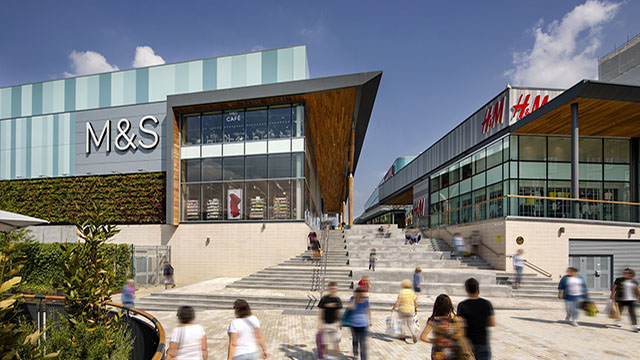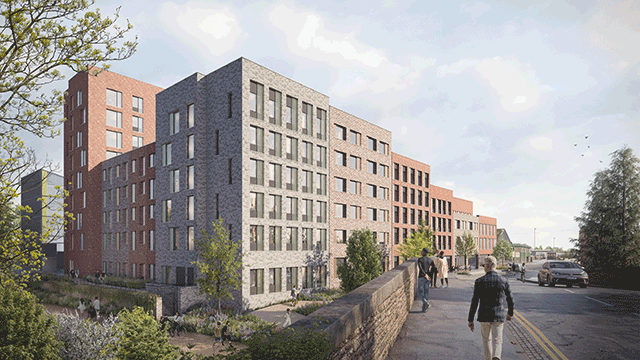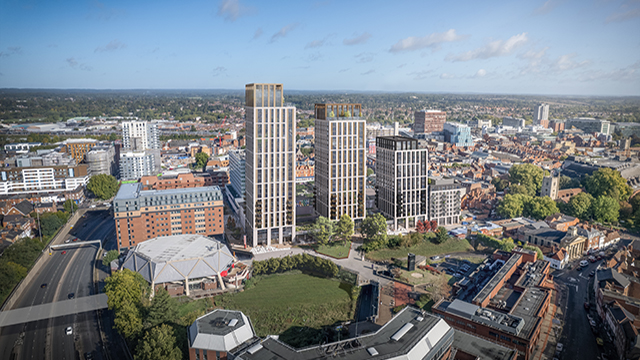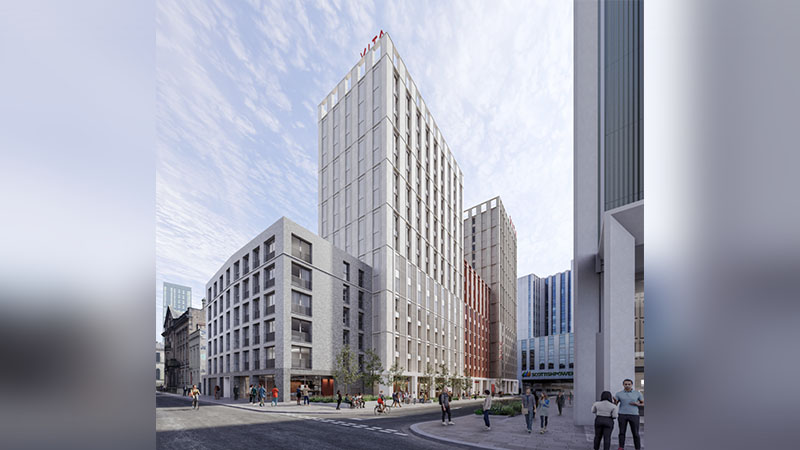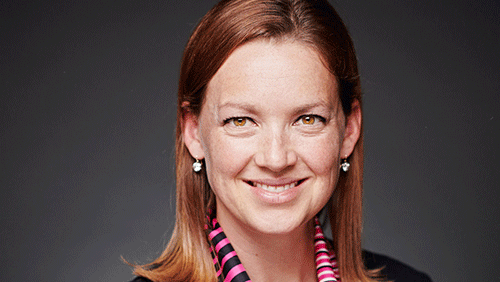Sheffield’s long-awaited retail quarter has been given a new lease of life, after securing a development partner and office anchor. Claire Robson asks what the scheme might have in store

When mega-mall Meadowhall opened its doors back in 1990, pressure mounted for Sheffield city centre to up the ante and deliver a new retail core. It has proved easier said than done. For more than two decades, the city failed to deliver and when Hammerson abandoned its Sevenstone scheme in 2013, it was difficult to see how the project could ever be salvaged.
But Sheffield City Council remained determined to forge ahead and drew up outline plans for a 900,000 sq ft mixed-use scheme, comprising 700,000 sq ft of retail and leisure, together with residential and office space. It began the search for a developer to transform the area from the south end of Fargate to Charter Square.
The council selected Queensberry ahead of Aspire Development Management as preferred development partner in June. Lendlease had been the third shortlisted developer before deciding to withdraw.
KEY POINTS
- Sheffield Retail Quarter mixed-use scheme could surpass 1m sq ft
- Queensberry preferred development partner signed seven-year contract
- Aspiration for 60% new retail brands, 20% leisure
- Experts say retail and leisure demand for city is high because of historic under-provision
Queensberry has a strong recent track record in delivering retail-led regeneration projects, having built schemes in cities such as Belfast, Manchester and Newport. In January, it was selected by Barnsley Council to manage the development of its own £100m mixed-use project.
Sheffield City Council’s executive director, Simon Green, says: “Queensberry is small enough to be enterprising and fleet of foot, but large enough to have been able to deliver successful schemes and prove that it can secure financing. It is also very keen to get on and move the project forward.”
Queensberry has signed a seven-year contract with the council to deliver the project, which it is hoped will complete in 2021.
Its initial role will be to ensure the project maintains its momentum by helping refine plans and lead negotiations with retailers. Green is hopeful key leases can be agreed early next year, with a view to submitting a planning application in the summer.
Queensberry chief executive Paul Sargent says: “Everyone is desperate to see progress, but we need a calm approach to understand the city and gain a better understanding of retailer needs.”
Plans are still at an early stage, yet Sargent believes the scheme could eventually surpass 1m sq ft. Together with 600,000 to 700,000 sq ft of retail and leisure, there could be up to 500,000 sq ft of other uses, including the possibility of two hotels, 150 to 200 residential units and another HQ office occupier to sit alongside HSBC.
Much of Queensberry’s time in the coming weeks will be spent negotiating with the scheme’s target anchor, John Lewis. John Lewis already has a store in the city, but it is poorly configured and it is hoped the retailer will agree to anchor the new retail quarter.
Sargent has been busy engaging with other retailers. He says: “We will focus on high street and premium brands and would imagine around 60% of occupiers will be new entrants to the city.”
Sargent says the scheme will comprise upwards of 20% leisure, and claims there is “a very high level of demand from all the main brands”, insisting that “Brexit has had no impact that I can see”.
Agents agree that demand remains resilient for space in a city that has been grossly undersupplied.
Central Retail managing director Simon Lyons says: “There is definitely enough retail demand to fill a scheme of this scale, be it new retailers wanting to come in, or existing occupiers wanting new units.” Those keen to upgrade their stores will include retailers such as Next, Topshop and H&M.
Savills director Steve Henderson agrees: “Occupiers have just been sitting on their hands waiting for something to finally bring the project forward. Meadowhall may sit on the city’s doorstep, yet retailers and leisure operators recognise there is scope to locate in both.”
Although most agents believe it is unlikely Queensberry can achieve the pre-recession zone-A rents of £250 per sq ft, it is hoped the scheme could push close to £200 per sq ft.
Once leases have been agreed, Queensberry will explore how the project can be financed. Sargent says investors are likely to require the scheme to be around 55% prelet before committing to forward fund.
The council, which owns the land on which the retail quarter will be built, is keen to explore the potential to secure a financial stake in the scheme.
It has already committed to spending £180m on the project to fund land purchases, enabling work and getting the scheme to the stage at which it can attract external funding. The figure also includes £90m to finance the development of the HSBC building.
There is the potential to boost the authority’s stake in the project with the tax incremental finance scheme – a mechanism allowing the council to borrow against projected business rates from new development.
However the scheme is funded, retail analysts predict it will have a seismic impact on Sheffield as a retail destination.
Harper Dennis Hobbs’ head of retail consultancy, Jonathan De Mello, says: “Sheffield is one of the most under-provided for cities in the country and the new retail quarter could see it rise from 43rd to 32nd in the retail rankings. It might trigger one of the greatest uplifts seen by a city in the past 10 years.”
Leading the pack
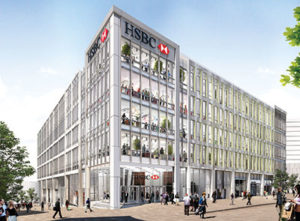 HSBC’s commitment to become Sheffield Retail Quarter’s first occupier not only boosts the project’s viability but also gives a shot in the arm to the city’s office market.
HSBC’s commitment to become Sheffield Retail Quarter’s first occupier not only boosts the project’s viability but also gives a shot in the arm to the city’s office market.
In September, HSBC signed a 15-year lease on what will become Sheffield Retail Quarter’s first office building. The bank agreed to take 140,000 sq ft of the £90m building for an undisclosed rent and will move from its existing offices in Hoyle Street and Griffin House in 2019.
Construction of the council-funded building will begin early 2017. Located between Wellington Street, Cambridge Street, Charter Row and Furnival Gate, it will also incorporate 60,000 sq ft of retail and a rooftop terrace.
“The letting provides a real boost to the office market and is critical in getting the new quarter kicked off,” says Commercial Property Partners partner Rob Darrington.
Office take‑up in Sheffield had a record year in 2015. At more than 480,000 sq ft, it eclipsed the 10-year average of around 300,000 sq ft as the highest annual take-up since the recession.
Together with key lettings to the city’s two universities, deals included XLN Telecom taking a further 14,000 sq ft at North Bank and US law firm Fragomen’s commitment to leasing 12,000 sq ft at Saville House, its first UK office outside London.
As well as news of HSBC, 2016 has seen Arup pay a record headline rent of £23 per sq ft on a 16,000 sq ft prelet at 3 St Paul’s Place. Although we are unlikely to see more records set this year, given Brexit and the fact that so much latent demand was absorbed in 2015, agents are upbeat about the overall health of the city’s office market.
With a lot of poor secondary stock taken out of the market by PDR and a return to speculative office development at 3 St Paul’s Place and Digital Campus, Sheffield’s offer to occupiers has stepped up a gear. “There are huge savings to be made by relocating to Sheffield and the city is now looking a far more attractive proposition,” says Darrington.
Lambert Smith Hampton associate director Tom Shelton adds: “Sheffield Retail Quarter can only help attract further inward investment and make developers, investors and fund managers view the city in a new light.”
Any comments? E-mail Stacey.meadwell@estatesgazette.com or tweet @EGStaceyM




